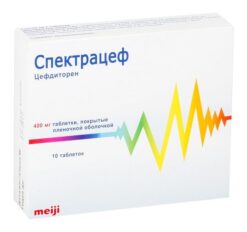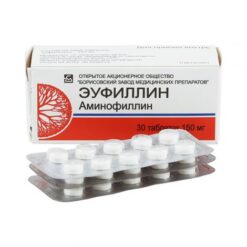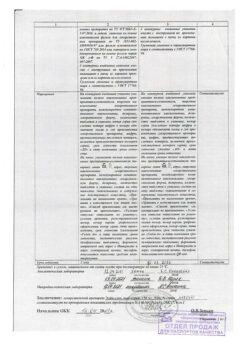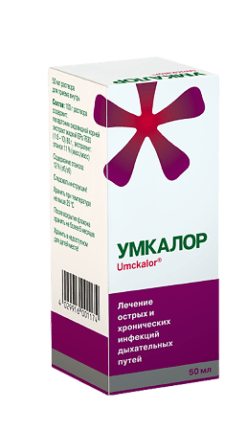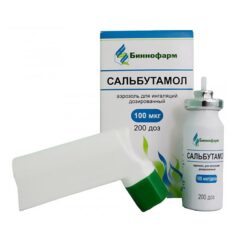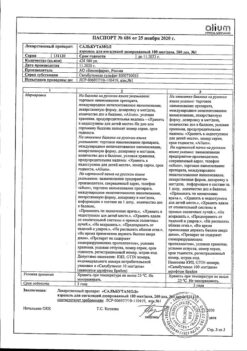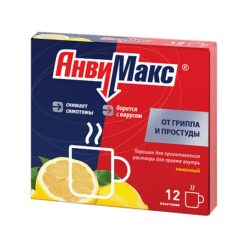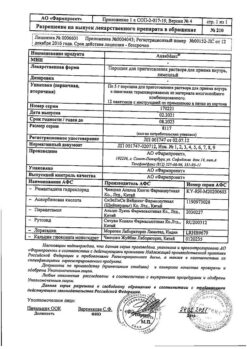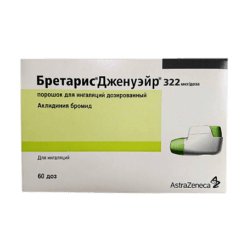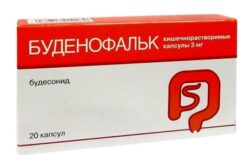No products in the cart.
Grippostad C, capsules 10 pcs
€1.00
Out of stock
(E-mail when Stock is available)
Description
Pharmacodynamics
Combined drug for treating symptoms of colds.
Ascorbic acid is involved in the regulation of redox processes, carbohydrate metabolism, blood clotting, tissue regeneration (repair), the synthesis of steroid hormones;
increases resistance to infection, reduces vascular permeability, reduces the need for vitamins B1, B2, A, E, folic acid, pantothenic acid.
It improves the tolerance of paracetamol and prolongs its effect (delays its elimination).
Caffeine has antispasmodic (relaxing) effect, expands the bronchi, tones cerebral vessels, stimulates the heart, has a general tonic effect.
Caffeine is a derivative of xanthine, it enhances the analgesic effect of paracetamol.
Paracetamol has analgesic (pain reliever), antipyretic and weak anti-inflammatory effect due to its influence on the thermoregulation center in the hypothalamus and a weak ability to inhibit the synthesis of prostaglandins in peripheral tissues.
Chlorphenamine is an antihistamine drug with antiallergic effect: it reduces nasal discharge and congestion, lacrimation and sneezing.
The combination of components of the drug provides better tolerance of symptoms of malaise and fever in acute respiratory viral infections and other colds.
Pharmacokinetics
Ascorbic acid
Absorbed in the proximal small intestine. Binding with plasma proteins – 25%.
It easily penetrates into leukocytes, platelets and then into all tissues; the highest concentration is achieved in glandular organs, leukocytes, liver and eye lens; penetrates through the placenta.
Metabolized primarily in the liver to deoxyascorbic acid and then to oxalic acid and ascorbate-2-sulfate.
Excreted by kidneys through the intestines, with sweat, breast milk unchanged and as metabolites.
Caffeine
Fully and quickly absorbed. Maximal concentrations are observed during the period from 5 to 90 minutes after the intake on an empty stomach.
In adults it is almost completely eliminated through hepatic metabolism.
There is a pronounced variability of individual elimination values in adults.
The average elimination half-life (T1/2/) from plasma is 4.9 h within the range of 1.9-12.2 h.
Caffeine is distributed in all body fluids. The binding of caffeine to plasma proteins is 35%.
Caffeine is almost completely metabolized by oxidation, demethylation and acetylation and excreted by the kidneys. The main metabolites are 1-methylxanthine, 7-methylxanthine, 1,7-dimethylxanthine.
Paracetamol
Fully and rapidly absorbed in the gastrointestinal tract, the maximum plasma concentrations are found after 30-60 minutes.
Paracetamol is rapidly distributed in most body tissues, penetrates through the placenta and is present in breast milk.
In therapeutic concentrations, binding to plasma proteins is insignificant and increases with increasing concentration.
It is subjected to primary metabolism in the liver, eliminated mainly in the urine as glucuronide and sulfate compounds.
Half-life period is 1-3 hours.
The hydroxylated metabolite, which forms in small amounts in the liver under the influence of mixed oxidases and is usually neutralized by binding to glutathione, can accumulate in paracetamol overdose and cause liver damage.
Chlorphenamine
Maximum plasma concentration is reached 1-2 hours after ingestion.
The duration of action is 3-6 hours.
Metabolism is mainly carried out in the liver via hydroxylation and conjugation as well as demethylation and formation of N- and S-oxides.
Bioavailability when taken orally is 25-50% due to a pronounced first pass effect that decreases in liver function insufficiency.
Binding with blood plasma proteins is 69-72%. Apparent volume of distribution of the drug is relatively high and amounts to 3-7 liters per kilogram of body weight.
The half-life from plasma of chlorphenamine in adult patients is 15-36 hours, and in children – 10-13 hours.
For patients with renal insufficiency a prolongation of the metabolites elimination half-life should be taken into account.
Depending on pH level (acidic or alkaline environment) 0-34% of the administered dose is excreted in the urine as unchanged chlorphenamine.
Accumulation is possible with prolonged use.
Indications
Indications
Feverish syndrome in infectious and inflammatory diseases
pain syndrome of moderate or mild severity (headache, toothache, migraine, neuralgia, myalgia, arthralgia, painful menstruation).
Pharmacological effect
Pharmacological effect
Pharmacodynamics
Combined drug to eliminate the symptoms of colds.
Ascorbic acid is involved in the regulation of redox processes, carbohydrate metabolism, blood clotting, tissue regeneration (restoration), and in the synthesis of steroid hormones;
increases the body’s resistance to infections, reduces vascular permeability, reduces the need for vitamins B1, B2, A, E, folic acid, pantothenic acid.
Improves the tolerability of paracetamol and prolongs its action (slowing its elimination).
Caffeine has an antispasmodic (relaxing) effect, dilates the bronchi, tones the blood vessels of the brain, stimulates the heart, and has a general tonic effect.
Caffeine is a xanthine derivative that enhances the analgesic effect of paracetamol.
Paracetamol has an analgesic (painkiller), antipyretic effect and a weak anti-inflammatory effect, which is associated with its effect on the thermoregulation center in the hypothalamus and a weak ability to inhibit the synthesis of prostaglandins in peripheral tissues.
Chlorphenamine is an antihistamine that has an antiallergic effect: it reduces nasal discharge and congestion, lacrimation, and sneezing.
The combination of drug components provides better tolerability of symptoms of malaise and fever during acute respiratory viral infections and other colds.
Pharmacokinetics
Ascorbic acid
Absorbed in the proximal small intestine. Communication with plasma proteins – 25%.
Easily penetrates into leukocytes, platelets, and then into all tissues; the highest concentration is achieved in the glandular organs, leukocytes, liver and lens of the eye; penetrates the placenta.
Metabolized primarily in the liver into deoxyascorbic acid and further into oxaloacetic acid and ascorbate-2-sulfate.
Excreted by the kidneys, through the intestines, with sweat, breast milk unchanged and in the form of metabolites.
Caffeine
Completely and quickly absorbed. Maximum concentrations are observed between 5 and 90 minutes after administration on an empty stomach.
In adults, elimination occurs almost entirely through hepatic metabolism.
There is marked variability in individual elimination values in adults.
The average half-life (T1/2/) from blood plasma is 4.9 hours in the range of 1.9-12.2 hours.
Caffeine is distributed in all body fluids. The binding of caffeine to plasma proteins is 35%.
Caffeine is almost completely metabolized by oxidation, demethylation and acetylation and is excreted by the kidneys. Main metabolites: 1-methylxanthine, 7-methylxanthine, 1,7-dimethylxanthine.
Paracetamol
Completely and quickly absorbed from the gastrointestinal tract, maximum plasma concentrations are detected after 30-60 minutes.
Paracetamol is rapidly distributed into most body tissues, crosses the placenta, and is present in breast milk.
At therapeutic concentrations, binding to plasma proteins is insignificant and increases with increasing concentration.
It undergoes primary metabolism in the liver and is excreted mainly in the urine in the form of glucuronide and sulfate compounds.
The half-life is 1-3 hours.
The hydroxylated metabolite, formed in small quantities in the liver under the influence of mixed oxidases and usually neutralized by binding to glutathione, can accumulate during an overdose of paracetamol and cause liver damage.
Chlorphenamine
Maximum plasma concentration is achieved 1-2 hours after administration.
The duration of action is 3-6 hours. Metabolism occurs mainly in the liver through hydroxylation and conjugation, as well as demethylation and the formation of N- and S-oxides.
Bioavailability when taken orally is 25-50% due to a pronounced first-pass effect, which decreases with insufficiency of liver function.
Plasma protein binding is 69-72%. The apparent volume of distribution of the drug is relatively high, amounting to 3-7 liters per kilogram of body weight.
The plasma half-life of chlorphenamine in adult patients is 15-36 hours, and in children – 10-13 hours.
For patients with renal failure, it is necessary to take into account the prolongation of the half-life of metabolites.
Depending on the pH level (acidic or alkaline), 0-34% of the dose taken is excreted in the urine as unchanged chlorphenamine.
Accumulation may occur with prolonged use.
Special instructions
Special instructions
It is not recommended to use Grippostad C for more than 3 days as an antipyretic and for more than 5 days as an analgesic without medical supervision.
For hyperthermia (high body temperature) lasting more than 3 days and pain for more than 5 days, consult a doctor.
Ascorbic acid, which is part of Grippostad S, distorts the results of laboratory tests assessing the concentration of glucose and uric acid in plasma.
You should not simultaneously use other medications containing paracetamol, as well as other non-narcotic analgesics and NSAIDs (metamizole, acetylsalicylic acid, ibuprofen, etc.), as well as barbiturates, antiepileptic drugs, rifampicin, chloramphenicol.
The simultaneous use of other drugs should be agreed with a doctor. When using the drug for more than 5 days, monitoring of the peripheral blood picture and the functional state of the liver is necessary.
Persons prone to drinking ethanol should consult a doctor before starting treatment with the drug, since paracetamol can have a damaging effect on the liver.
Active ingredient
Active ingredient
Caffeine, Paracetamol, Chlorphenamine, Ascorbic acid
Composition
Composition
1 caps.
paracetamol
200 mg
ascorbic acid
150 mg
caffeine
25 mg
chlorphenamine hydromaleate
2.5 mg
Excipients:
Lactose monohydrate,
Glyceryl tristearate,
Gelatin.
Composition of the capsule body:
Gelatin,
Water,
Titanium dioxide
Composition of the capsule cap:
Gelatin,
Quinoline yellow,
Water,
Sunset yellow dye
Titanium dioxide
Contraindications
Contraindications
Individual intolerance to the components of the drug;
gastrointestinal bleeding;
portal hypertension;
alcoholism;
severe liver and/or renal failure;
pregnancy (I and III trimesters) and lactation period;
children under 15 years of age;
deficiency of glucose-6-phosphate dehydrogenase;
angle-closure glaucoma;
prostatic hypertrophy with the formation of residual urine;
severe arrhythmias (irregular heart rhythm);
uncontrolled arterial hypertension.
The drug is prescribed with caution for:
erosive and ulcerative lesions of the gastrointestinal tract (in the acute phase),
liver and/or kidney failure,
congenital hyperbilirubinemia (diseases in which the level of bilirubin in the blood is increased – Gilbert, Dubin-Johnson and Rotor syndromes).
Side Effects
Side Effects
In therapeutic doses, the drug is usually well tolerated.
Sometimes allergic skin reactions are possible (skin rash, itching, urticaria, angioedema); gastrointestinal dysfunction (nausea, epigastric pain, dry mouth); difficulty urinating.
Rarely – blood system disorders (anemia, leukopenia – low level of leukocytes in the blood, thrombocytopenia – low level of platelets in the blood).
With long-term use in large doses (more than 12 capsules daily for more than 5 days) – hepatotoxic effect, blood system disorders; erosive and ulcerative lesions of the gastrointestinal tract; nephrotoxicity (papillary necrosis).
Interaction
Interaction
Ethanol contributes to the development of acute pancreatitis. Microsomal oxidation inhibitors (cimetidine) reduce the risk of hepatotoxicity.
The drug reduces the effectiveness of uricosuric drugs.
Enhances the effect of drugs that depress the central nervous system, ethanol.
If gastric emptying is delayed (propantheline), the onset of action of paracetamol may be delayed.
By accelerating gastric emptying (metoclopramide), the drug begins to work faster. The toxicity of chloramphenicol increases.
Use caution with prolonged use of paracetamol and simultaneous therapy with oral drugs that inhibit blood clotting.
Stimulators of microsomal oxidation in the liver (phenytoin, ethanol, barbiturates, rifampicin, phenylbutazone, tricyclic antidepressants) increase the production of hydroxylated active metabolites, which makes it possible to develop severe intoxications with small overdoses.
Myelotoxic drugs increase the manifestations of hematotoxicity of the drug.
Overdose
Overdose
Symptoms (due to paracetamol): pale skin, decreased appetite, nausea, vomiting; hepatonecrosis (the severity of necrosis due to intoxication directly depends on the degree of overdose).
Toxic effects in adults are possible after taking more than 10-15 g of paracetamol: increased activity of liver transaminases, increased prothrombin time (12-48 hours after administration); a detailed clinical picture of liver damage appears after 1-6 days.
Rarely, liver failure develops at lightning speed and can be complicated by renal failure (tubular necrosis).
Treatment: administration of SH-group donors and precursors for the synthesis of glutathione – methionine 8-9 hours after an overdose and N-acetylcysteine - after 12 hours.
The need for additional therapeutic measures (further administration of methionine, intravenous administration of N-acetylcysteine) is determined depending on the concentration of paracetamol in the blood, as well as the time elapsed after its administration.
Storage conditions
Storage conditions
At a temperature not exceeding 25 °C
Shelf life
Shelf life
5 years. Do not use the drug after the expiration date indicated on the package.
Manufacturer
Manufacturer
Stada Arzneimittel AG, Germany
Additional information
| Shelf life | 5 years. Do not use the drug after the expiration date stated on the package. |
|---|---|
| Conditions of storage | At a temperature not exceeding 25 °C |
| Manufacturer | Stada Arzneimittel AG, Germany |
| Medication form | capsules |
| Brand | Stada Arzneimittel AG |
Related products
Buy Grippostad C, capsules 10 pcs with delivery to USA, UK, Europe and over 120 other countries.


